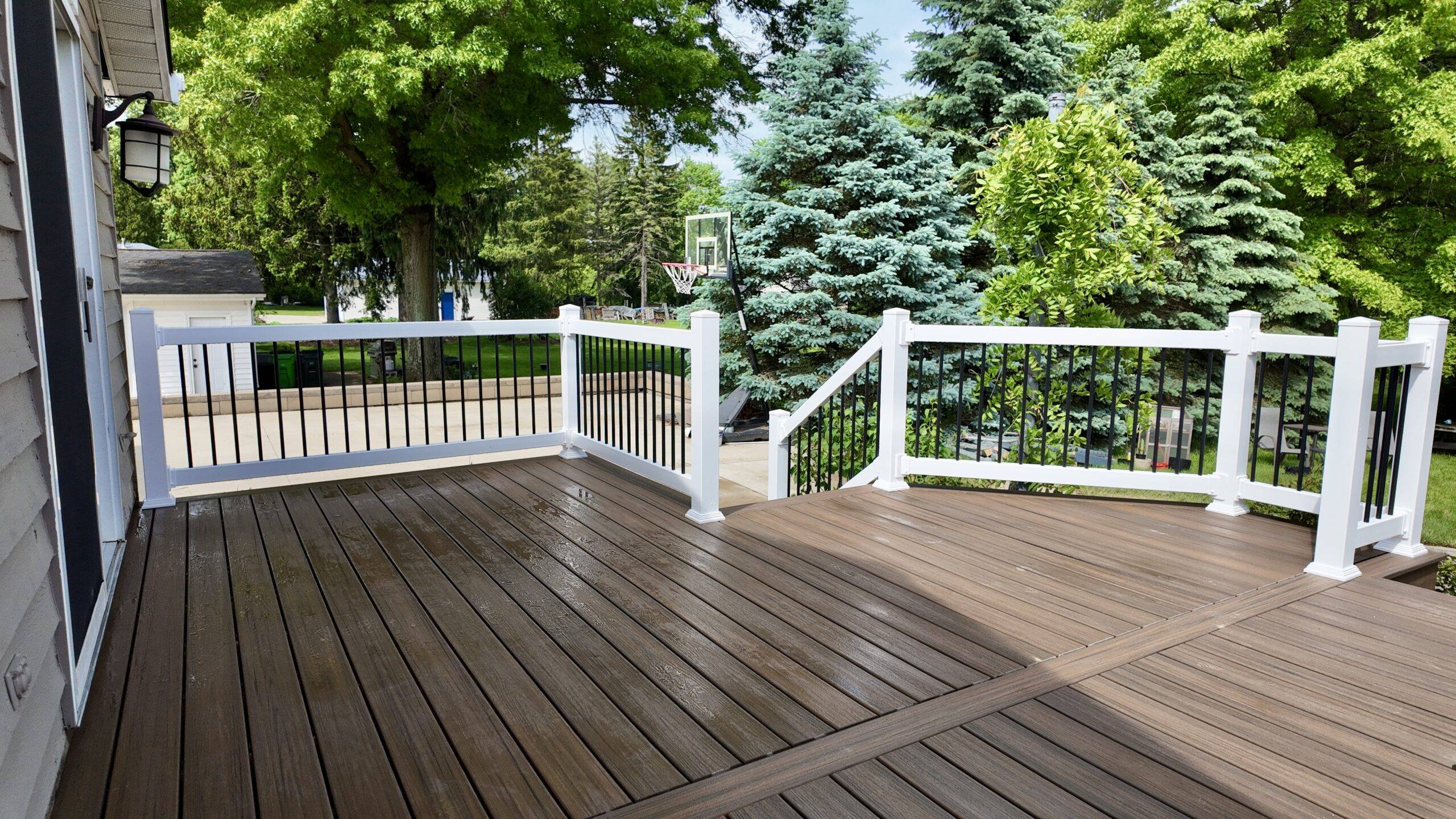When planning your new deck, one of the first decisions you’ll face is choosing between wood and composite materials. At DreamDecks, we offer a variety of top-quality decking options, and we’re here to help you make the best choice for your home. Below, we break down the pros and cons of wood and composite decking, so you can find the perfect match for your needs.
Wood Decking: The Classic Choice
Wood has been the traditional decking material for generations. It offers a natural look that blends beautifully with the outdoors and can be customized with stains and paints. Common wood options include pressure-treated lumber, cedar, and redwood.
Pros of Wood Decking:
- Natural Beauty: The organic, authentic appearance of wood adds warmth to any outdoor space.
- Cost-Effective: Wood is often cheaper upfront compared to composite materials.
- Customizable: Wood can be stained or painted in various colors to match your style.
Cons of Wood Decking:
- High Maintenance: Wood decks need regular staining, sealing, or painting to prevent weather damage and rot.
- Shorter Lifespan: Wood is prone to cracking, splintering, and decaying over time, especially in harsh weather conditions.
- Vulnerability to Pests: Without proper maintenance, wood can attract termites and other pests.
Composite Decking: Durable and Low Maintenance
Composite decking, made from a mix of wood fibers and plastic, has become increasingly popular due to its durability and low maintenance requirements. We proudly offer leading composite brands like TimberTech (https://www.timbertech.com), Trex (https://www.trex.com), and Deckorators (https://www.deckorators.com).
Pros of Composite Decking:
- Low Maintenance: Composite decks only require occasional cleaning with soap and water—no staining or sealing needed.
- Longer Lifespan: Composite materials can last up to 25-30 years, resisting rot, mold, and insect damage.
- Environmentally Friendly: Many composite brands use recycled materials, making it an eco-friendly option.
- Variety of Styles: Composite decking comes in a wide range of colors, textures, and finishes, offering more design flexibility than wood.
Cons of Composite Decking:
- Higher Upfront Cost: Composite decking tends to be more expensive initially than wood.
- Less Natural Appearance: While composite decking mimics the look of wood, it may not have the same organic warmth for some homeowners.
Which Decking Material is Right for You?
Both wood and composite decking have their advantages, but the best choice depends on your lifestyle, budget, and how much maintenance you’re willing to take on. If you’re looking for a traditional, natural appearance and don’t mind some upkeep, wood may be the perfect option. On the other hand, if you prefer a deck that requires minimal maintenance and can withstand the elements, composite is the way to go.
Get Expert Guidance from DreamDecks
Still not sure which material is right for you? At DreamDecks, we specialize in building custom decks tailored to your needs. Contact us today for a free consultation at https://buildyourdreamdeck.com/contact, and let us help you design the perfect outdoor space that complements your home.
Need more info? Check out our full range of decking materials here: https://buildyourdreamdeck.com/decking-materials



Comments are closed